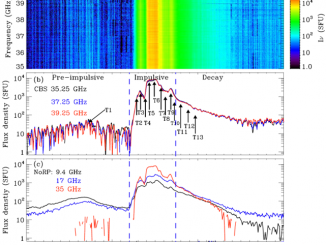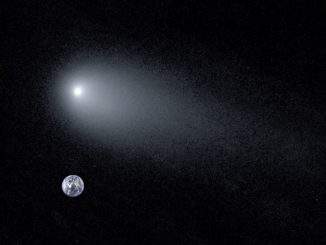The First Flare Observation with a New Solar Microwave Spectrometer Working in 35–40 GHz, By Yan et al.
Microwave emission of solar flares can be excited by energetic electrons through the gyrosynchrotron (GS) radiation. Thus, the microwave spectra contain valuable/unique information not only about energetic electrons accelerated during solar flares, but also about the underlying magnetic field and energy release process. The typical microwave spectra peak below or around, say, ~10 GHz, at which the spectral slope turns over from positive — the optically thick regime — to […]



